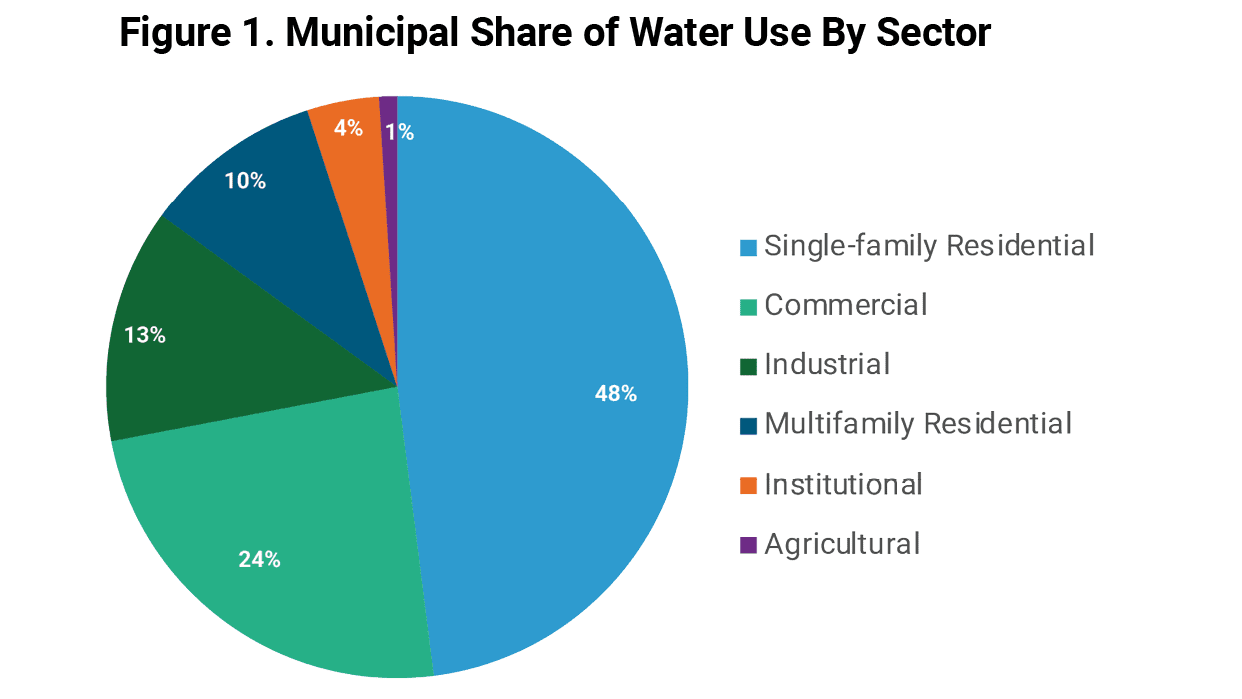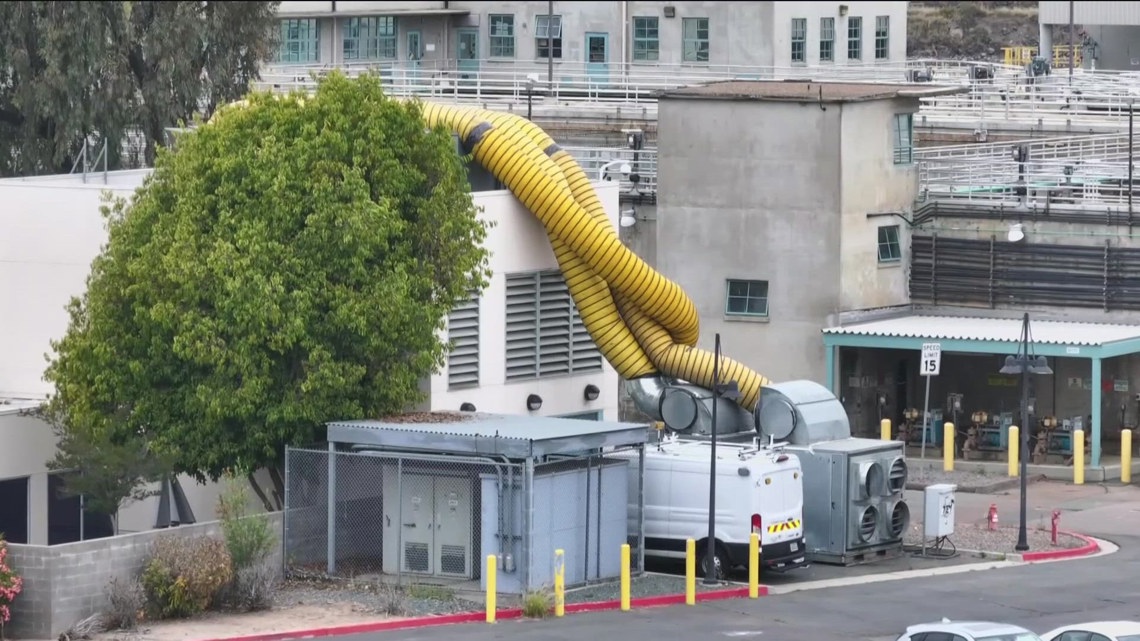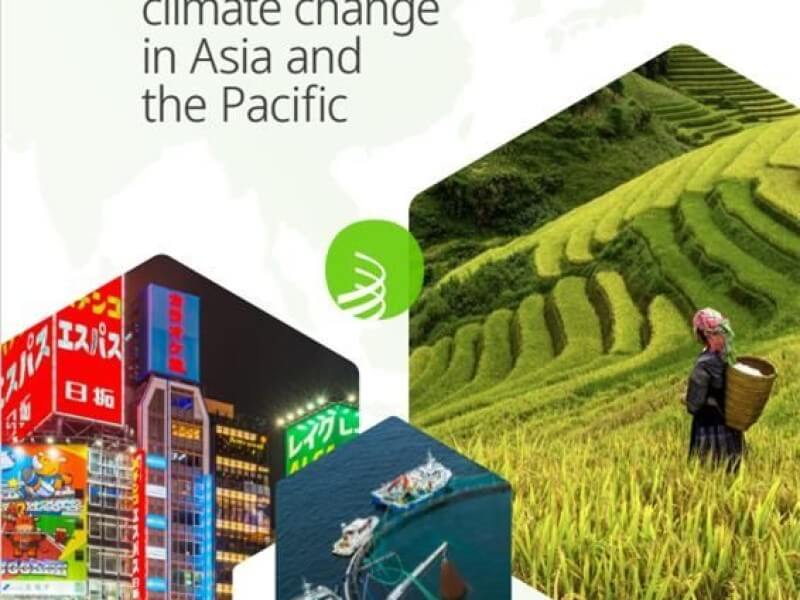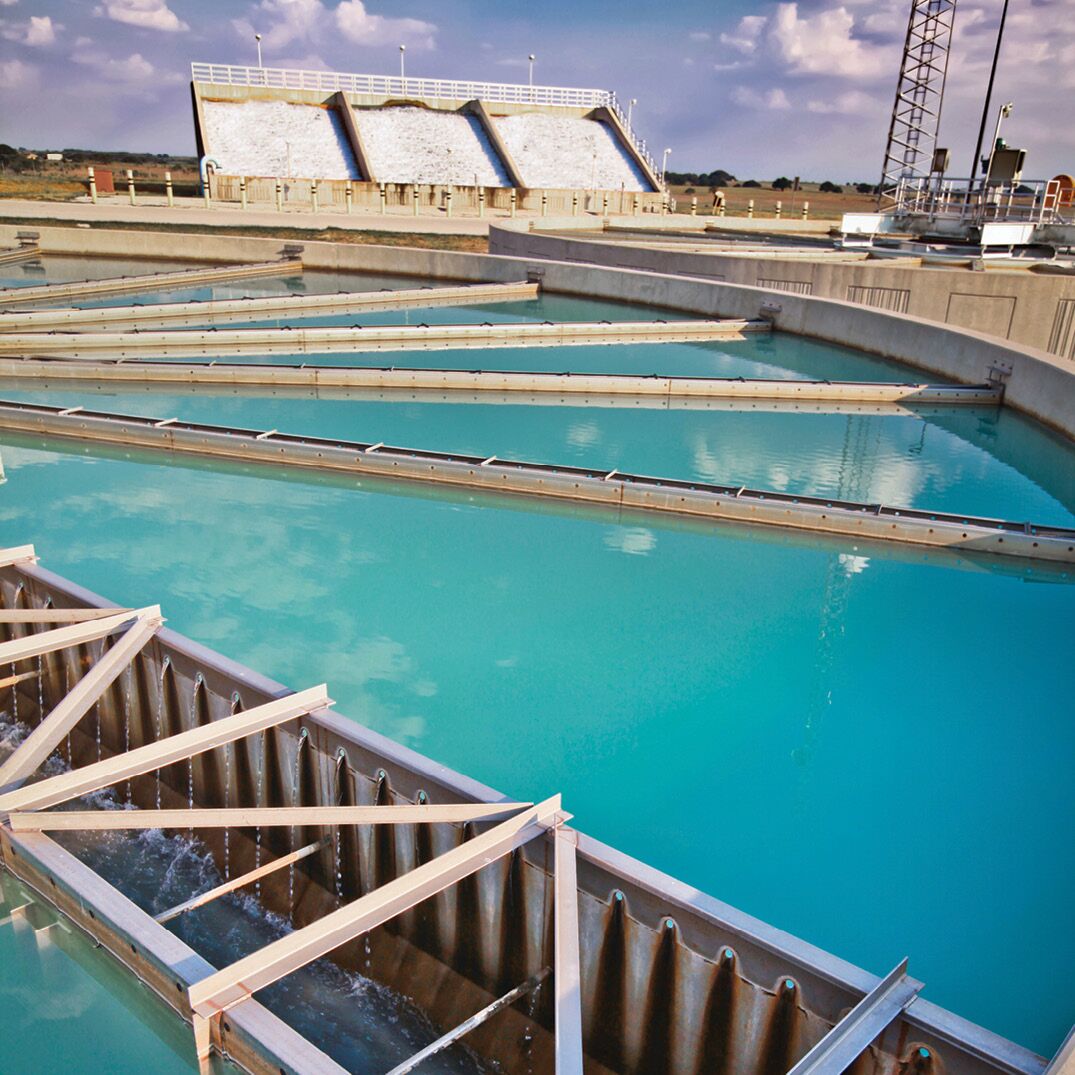Report on Municipal Water Use Efficiency in Texas and Alignment with Sustainable Development Goals
Introduction: Water Scarcity and the Imperative for Sustainable Management
In Texas, escalating municipal water demand presents a significant challenge to sustainable development. Projections indicate that municipal use will constitute 44 percent of total statewide water demand by 2070, underscoring the critical need for enhanced water use efficiency. This report analyzes trends in municipal water consumption, focusing on the alignment of current strategies and future policies with key United Nations Sustainable Development Goals (SDGs), particularly SDG 6 (Clean Water and Sanitation), SDG 11 (Sustainable Cities and Communities), and SDG 12 (Responsible Consumption and Production).
Analysis of Municipal Water Consumption Patterns
Municipal water, supplied by public utilities, serves a diverse range of users. Achieving SDG 6, which calls for the sustainable management of water, requires a detailed understanding of consumption across these sectors.
Sectoral Breakdown of Water Use
- Single-family Residential: 48%
- Commercial: 24%
- Industrial: 13%
- Multifamily Residential: 10%
- Institutional: 4%
- Agricultural: 1%
The residential sector is the dominant consumer, accounting for a combined 58 percent of municipal water. This highlights the importance of household-level interventions in achieving water conservation targets integral to SDG 6 and SDG 12.
Historical Trends and Progress Towards SDG 6.4
Target 6.4 of the SDGs aims to substantially increase water-use efficiency across all sectors. Texas has demonstrated progress in this area through a combination of technological advancements and behavioral shifts. Key milestones include:
- 1970s: Introduction of water metering and public education campaigns initiated efficiency improvements.
- 1992: The federal Energy Policy Act mandated flow rate limits for water fixtures, leading to significant long-term savings as efficient products entered the market.
- 2000s: Voluntary conservation programs further enhanced efficiency.
Between 2000 and 2022, per capita municipal water consumption in Texas improved by 12 percent. This trend of decoupling water use from population growth is a positive indicator of progress towards sustainable resource management.
Drivers of Residential Water Efficiency Gains
Despite significant population and household growth, residential water consumption has grown at a much slower rate. This disparity is attributable to several factors that directly support the objectives of SDGs 6, 11, and 12.
Urban Density and Sustainable Communities (SDG 11)
Increased urban density contributes to lower per-household water consumption. Denser development typically involves smaller lots and reduced outdoor irrigation needs. This “built environment effect” aligns with SDG 11’s goal of creating sustainable and resilient cities that manage resources efficiently. Shared infrastructure in dense areas also helps reduce water loss from leaks.
Water-Efficient Technology and Responsible Consumption (SDG 12)
The adoption of water-efficient appliances and fixtures is a primary driver of household water savings. Appliances meeting ENERGY STAR criteria, for example, use 30 percent less water than conventional models. This trend reflects progress towards SDG 12, which promotes sustainable consumption patterns and the efficient use of natural resources.
Consumer Awareness and Behavioral Change (SDG 12)
Growing public awareness of water conservation has prompted behavioral changes, leading to significant water savings. This shift is crucial for achieving SDG 12.8, which emphasizes ensuring people have the information and awareness necessary for sustainable lifestyles.
Water Conservation Strategies and Policy Incentives (SDG 6)
Local and state policies have been instrumental in promoting water efficiency.
- Incentive Programs: Municipalities like Austin and San Antonio have successfully used rebates and incentives to encourage the adoption of water-saving technologies and drought-tolerant landscaping.
- Pricing Policies: Tiered pricing structures have been implemented to discourage high water use while ensuring equitable access, directly supporting market-based efficiency improvements aligned with SDG 6.
Legislative Framework and Future Outlook for Achieving SDGs
Recent legislation passed by the Texas Legislature is poised to accelerate progress towards sustainable water management.
Promoting Sustainable Urban Design
Senate Bill 15, which eliminates minimum lot size requirements, encourages denser residential development. This policy is expected to generate substantial water savings by reducing landscaping needs, contributing directly to the goals of SDG 11 (Sustainable Cities and Communities).
Enhancing Infrastructure and Conservation Efforts
New state policies provide a robust framework for advancing water efficiency and conservation.
- Senate Bill 7: Dedicates resources to mitigating water loss from leaks in infrastructure and funds municipal conservation programs, directly addressing SDG 6.
- House Bill 29: Mandates water loss audits for large municipal utilities, ensuring accountability and efficient resource management.
- Other Measures: Additional bills encourage water recycling and reuse, further diversifying water sources and enhancing the resilience of water systems.
Conclusion
Texas is making measurable progress in improving municipal water use efficiency, a critical component of achieving global sustainability targets. The combined impact of technological innovation, strategic urban planning, targeted policy interventions, and increased public awareness has successfully slowed the growth of water demand relative to population growth. Future legislative measures are set to reinforce these trends, positioning the state to better address water scarcity and advance its commitment to SDG 6 (Clean Water and Sanitation), SDG 11 (Sustainable Cities and Communities), and SDG 12 (Responsible Consumption and Production).
1. Which SDGs are addressed or connected to the issues highlighted in the article?
SDG 6: Clean Water and Sanitation
- The entire article is centered on the management of water resources, specifically focusing on municipal water use, efficiency, and conservation in Texas to address projected water scarcity. This directly aligns with the core objective of SDG 6, which is to ensure the availability and sustainable management of water for all.
SDG 11: Sustainable Cities and Communities
- The article discusses how urban growth, density, and design impact water consumption. It highlights strategies like denser residential development and improved municipal infrastructure (e.g., reducing leaks) as key to managing water demand in growing urban areas. This connects to SDG 11’s goal of making cities inclusive, safe, resilient, and sustainable.
SDG 12: Responsible Consumption and Production
- The article emphasizes improving water-use efficiency through technological advancements (water-efficient appliances), policy incentives (tiered pricing, rebates), and changes in consumer behavior. This reflects the principles of SDG 12, which promotes the efficient use of natural resources and encourages sustainable consumption patterns.
2. What specific targets under those SDGs can be identified based on the article’s content?
SDG 6: Clean Water and Sanitation
- Target 6.4: By 2030, substantially increase water-use efficiency across all sectors and ensure sustainable withdrawals and supply of freshwater to address water scarcity.
- The article directly addresses this target by analyzing historical and projected gains in water efficiency in Texas. It discusses various measures, from the Energy Policy Act of 1992 to recent state legislation like SB 7, all aimed at improving “municipal water use efficiency” to combat “projected water scarcity.”
SDG 11: Sustainable Cities and Communities
- Target 11.3: By 2030, enhance inclusive and sustainable urbanization and capacity for participatory, integrated and sustainable human settlement planning and management in all countries.
- The article connects urban planning directly to water efficiency. The section “Urban Density Efficiency Gains” and the discussion of Senate Bill 15, which “permits denser residential development by eliminating minimum lot size requirements,” show a clear link between sustainable urban planning and resource management, which is central to this target.
SDG 12: Responsible Consumption and Production
- Target 12.2: By 2030, achieve the sustainable management and efficient use of natural resources.
- This target is reflected in the article’s focus on reducing water consumption through various means. The text highlights “Gains from Water-Efficient Appliances and Fixtures,” “Rising Consumer Awareness,” and “Water Conservation Strategies” like rebates and tiered pricing, all of which contribute to the more efficient use of water as a natural resource.
3. Are there any indicators mentioned or implied in the article that can be used to measure progress towards the identified targets?
Indicators for SDG Target 6.4 (Water-Use Efficiency)
- Per-Capita Water Demand: The article explicitly uses this indicator. Figure 2, “Texas Statewide Municipal Total Water Demand and Per-Capita Demand,” tracks acre-feet per capita over time, showing a gradual decline which signifies improved efficiency. The text notes that between 2000 and 2022, “municipal water consumption in Texas improved by 12 percent on a per capita basis.”
- Daily Household Water Consumption: This is a key metric used to demonstrate efficiency gains at the residential level. Figure 4 shows the decline in “Daily Household Water Consumption (Gallons)” from 293 gallons in 2012 to 255 gallons in 2022.
- Percentage of Water Loss: This indicator is implied through the discussion of new legislation. House Bill 29, which “requires audits of large municipally owned utilities to ensure water losses fall below state thresholds,” and SB 7, which “dedicates resources to improving infrastructure that mitigates water loss through leaks,” point to measuring and reducing water loss as a key goal.
Indicators for SDG Target 11.3 (Sustainable Urbanization)
- Urban Density / Lot Size: The article implies this as an indicator of sustainable urban design. It states that “new development tends to be more densely planned with smaller lots with smaller outdoor irrigation area” and that SB 15 will permit “higher density single-family residential development,” which is “expected to generate significant water savings.” Progress could be measured by tracking average residential lot sizes or housing units per acre in new developments.
Indicators for SDG Target 12.2 (Efficient Use of Resources)
- Adoption Rate of Water-Efficient Technology: The article mentions the impact of water-efficient appliances, noting that an “ENERGY STAR criteria” washing machine “uses 30 percent less water.” The rate at which households adopt such technologies serves as an indicator of progress in efficient resource use.
- Participation in Conservation Programs: The article points to the success of local strategies, such as Austin Water Utility’s rebates and San Antonio’s program where “homeowners replaced over two million square feet of traditional grass with drought tolerant landscape.” The uptake of these programs is a direct measure of changing consumption patterns.
4. Create a table with three columns titled ‘SDGs, Targets and Indicators” to present the findings from analyzing the article. In this table, list the Sustainable Development Goals (SDGs), their corresponding targets, and the specific indicators identified in the article.
| SDGs | Targets | Indicators |
|---|---|---|
| SDG 6: Clean Water and Sanitation | 6.4: Increase water-use efficiency and ensure sustainable withdrawals to address water scarcity. |
|
| SDG 11: Sustainable Cities and Communities | 11.3: Enhance sustainable urbanization and human settlement planning. |
|
| SDG 12: Responsible Consumption and Production | 12.2: Achieve the sustainable management and efficient use of natural resources. |
|
Source: trerc.tamu.edu







